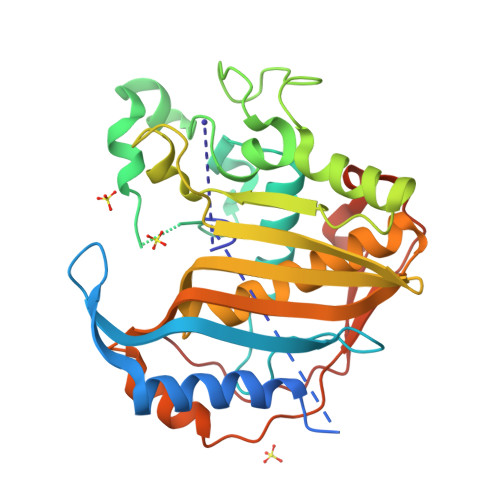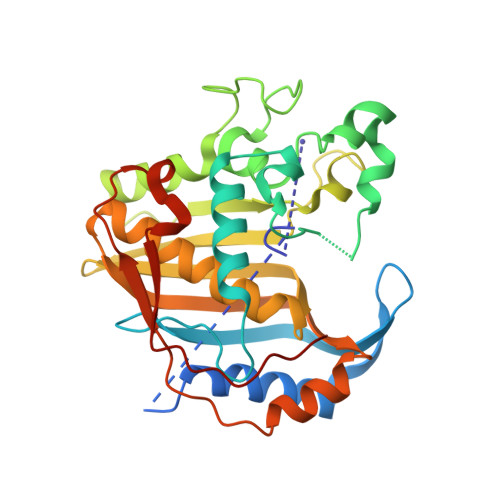Replacement of Val3 in human thymidylate synthase affects its kinetic properties and intracellular stability .
Huang, X., Gibson, L.M., Bell, B.J., Lovelace, L.L., Pena, M.M., Berger, F.G., Berger, S.H., Lebioda, L.(2010) Biochemistry 49: 2475-2482
- PubMed: 20151707
- DOI: https://doi.org/10.1021/bi901457e
- Primary Citation of Related Structures:
3EAW, 3EBU, 3ED7, 3EDW, 3EF9, 3EJL, 3GG5, 3GH0, 3GH2 - PubMed Abstract:
Human and other mammalian thymidylate synthase (TS) enzymes have an N-terminal extension of approximately 27 amino acids that is not present in bacterial TSs. The extension, which is disordered in all reported crystal structures of TSs, has been considered to play a primary role in protein turnover but not in catalytic activity. In mammalian cells, the variant V3A has a half-life similar to that of wild-type human TS (wt hTS) while V3T is much more stable; V3L, V3F, and V3Y have half-lives approximately half of that for wt hTS. Catalytic turnover rates for most Val3 mutants are only slightly diminished, as expected. However, two mutants, V3L and V3F, have strongly compromised dUMP binding, with K(m,app) values increased by factors of 47 and 58, respectively. For V3L, this observation can be explained by stabilization of the inactive conformation of the loop of residues 181-197, which prevents substrate binding. In the crystal structure of V3L, electron density corresponding to a leucine residue is present in a position that stabilizes the loop of residues 181-197 in the inactive conformation. Since this density is not observed in other mutants and all other leucine residues are ordered in this structure, it is likely that this density represents Leu3. In the crystal structure of a V3F.FdUMP binary complex, the nucleotide is bound in an alternative mode to that proposed for the catalytic complex, indicating that the high K(m,app) value is caused not by stabilization of the inactive conformer but by substrate binding in a nonproductive, inhibitory site. These observations show that the N-terminal extension affects the conformational state of the hTS catalytic region. Each of the mechanisms leading to the high K(m,app) values can be exploited to facilitate design of compounds acting as allosteric inhibitors of hTS.
Organizational Affiliation:
Department of Chemistry and Biochemistry, University of South Carolina, Columbia, South Carolina 29208, USA.

















